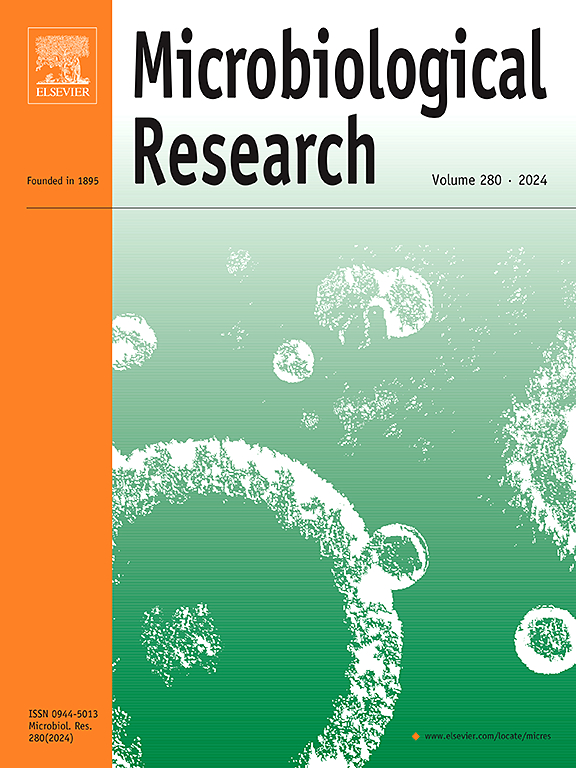Glabridin restore the sensitivity of colistin against mcr-1-positive Escherichia coli by polypharmacology mechanism
IF 6.1
1区 生物学
Q1 MICROBIOLOGY
引用次数: 0
Abstract
The clinical effectiveness of colistin against multidrug-resistant Gram-negative pathogen infections has been threatened by the emergence of the plasmid-mediated colistin-resistant gene mcr-1. This development underscores the urgent need for innovative therapeutic strategies that target resistance mechanisms. In this study, we demonstrated that glabridin can restore the sensitivity of colistin to mcr-1-positive Escherichia coli (E. coli) and exhibits a reduced propensity for resistance development. Our investigation into the underlying mechanisms revealed that glabridin may re-sensitize E. coli to colistin by targeting MCR-1 to inhibit its activity, regulating the expression of mcr-1, and restoring the Zeta potential at the cell membrane surface. Furthermore, the combination of glabridin and colistin increased bacterial membrane permeability, decreased membrane fluidity, disrupted transmembrane proton motive force (PMF), reduced the ratios of NAD+/NADH and FAD/FADH2, facilitated the tricarboxylic acid (TCA) cycle, and led to the accumulation of reactive oxygen species (ROS) in E. coli cells, ultimately resulting in bacterial death. In animal models, glabridin significantly enhanced the efficacy of colistin in treating E. coli infections. Our findings suggest that glabridin is a promising polypharmacological antibiotic adjuvant for addressing infections associated with colistin-resistant E. coli.
光甘草定恢复粘菌素对mcr-1阳性大肠杆菌敏感性的多药理学机制。
质粒介导的粘菌素耐药基因mcr-1的出现威胁着粘菌素治疗多重耐药革兰氏阴性病原体感染的临床效果。这一发展强调了迫切需要针对耐药机制的创新治疗策略。在这项研究中,我们证明光甘草定可以恢复粘菌素对mcr-1阳性大肠杆菌(E. coli)的敏感性,并表现出降低耐药性发展的倾向。我们对其潜在机制的研究表明,光甘草定可能通过靶向MCR-1抑制其活性,调节MCR-1的表达,恢复细胞膜表面的Zeta电位,从而使大肠杆菌对粘菌素重新敏感。光光定与粘菌素联用可增加细菌膜通透性,降低膜流动性,破坏跨膜质子动力(PMF),降低NAD+/NADH和FAD/FADH2比值,促进三羧酸(TCA)循环,导致大肠杆菌细胞内活性氧(ROS)积累,最终导致细菌死亡。在动物模型中,光甘草定显著增强粘菌素治疗大肠杆菌感染的效果。我们的研究结果表明光定是一种很有前途的多药理学抗生素佐剂,用于解决与粘菌素耐药大肠杆菌相关的感染。
本文章由计算机程序翻译,如有差异,请以英文原文为准。
求助全文
约1分钟内获得全文
求助全文
来源期刊

Microbiological research
生物-微生物学
CiteScore
10.90
自引率
6.00%
发文量
249
审稿时长
29 days
期刊介绍:
Microbiological Research is devoted to publishing reports on prokaryotic and eukaryotic microorganisms such as yeasts, fungi, bacteria, archaea, and protozoa. Research on interactions between pathogenic microorganisms and their environment or hosts are also covered.
 求助内容:
求助内容: 应助结果提醒方式:
应助结果提醒方式:


